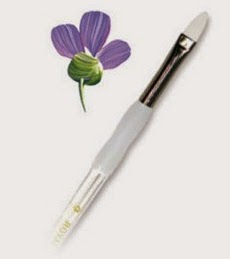If you haven't already, please read my previous post
When shopping for Face Paint brushes there are a few things to keep in mind
1. Size Matters
You'll also want to pay attention to the handle length of your brush, in this case you want to opt for shorter handles.
2. Pricier Doesn't Always = Better

The expensive brushes you see in the art stores are made for oil painting, or they are certain brand names, or are made with a certain animal fiber with drives up the price. At the same time you don't want to get stuck with a children's plastic paint by number brush, so what you want to look for is something in between, and rarely going over $20.
3. Choose Synthetic Over Real Hair
Again proof that expensive isn't always the best! Believe it or not Synthetic hair brushes are way better for face painting. That Kolinsky sable hair brush made from the winter tail of male martens from Siberia is actually worse for face painting. And yes that's a real type of brush.
4. Buy What You Need
I know it sounds obvious, but some times you can go overboard with buying. You might feel that you want a brush of every size and type and one for each color!
5. Read And Watch Reviews!
Seriously this is pretty much how I have found my favorite brushes. Lots of research, reading, and of course videos so i can see the brush in action. The best youtube face painters will include which brushes they are using in their tutorials and this is how I found my favorite set of round brushes, my petal brush and my favorite One Stroke Brush!
6. Shop Online!
I'll be honest, you are NOT going to find most the best face painting brushes at your local art supply store. The ones i have found that suit my needs have mostly been luck, and then I can never find the same one ever again. They say it's a poor craftsman who blames their tools, but i beg to differ. If you want to be a serious professional face painter, then you have to put value in your tools and you have to buy the best tools for the job.
MY BRUSHES
MY BRUSHES
- Three 3/4 flat brushes (#12's) - Protege Gold Nylon
- Three #10 flats, - Protege Gold Nylon
- One #12 Filbert - unknown brand

- Two Petal Brushes large and small, - Silly Farm brand
- One #8 filbert - Royal Soft Grip
- One set of Loew Cornell Soft Comfort round Brushes #10, #6, #4, #2,
- Two Sets of Loew Cornell Gold Grip round Brushes #1 - #6

- Several other misc brushes of an unknown brand I use as chip brushes, for stipple, splatter, or rough work.











No comments:
Post a Comment